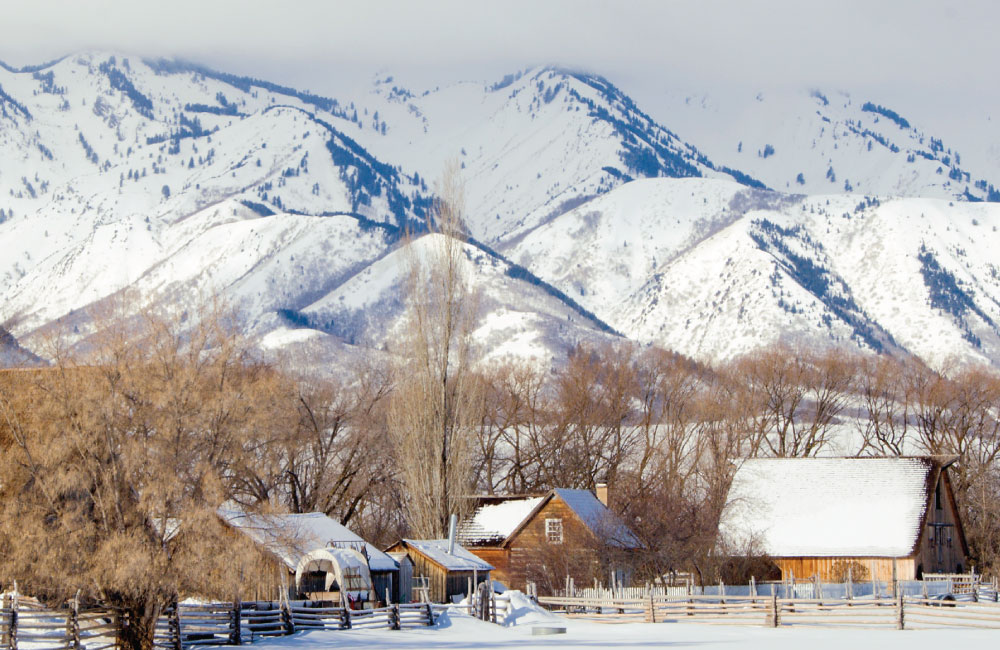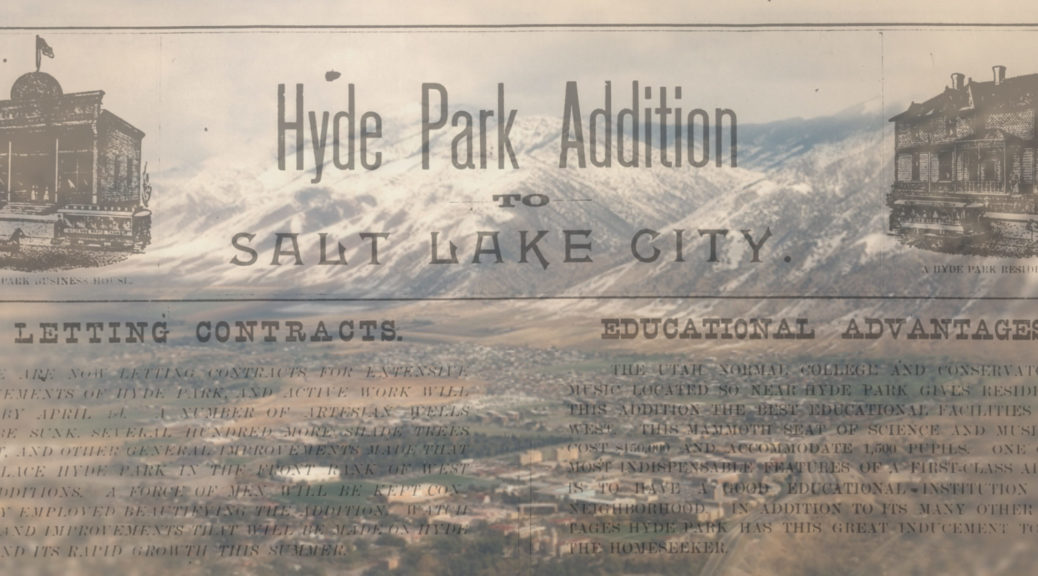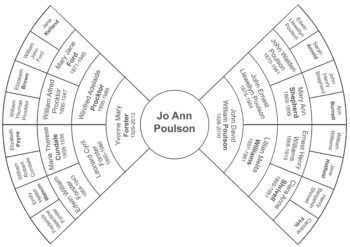Deciding to take a DNA test has been a source of all sorts of surprises – an unknown cousin, for example. The discovery of Cornish mining ancestors for my husband’s family as another. My current puzzle is how a kid from Camden Town in London (photo on left is the flat my parents lived in) has DNA matches to a group of people who have been living in the USA since the 1860s. The more digging I do, the more clear the picture becomes with one small, but important, missing piece – how this group of related people in the US is genetically connected to me!
I have updated a few details of this story (in April 2021), but I still do not have the missing link – the person (or persons) in my family tree who explain my DNA matches. Unfortunately, none of the contacts via Ancestry’s messaging responded. I continue to add to my tree – I hadn’t filled out details for some of the more distant relatives – in the hope that at some point there’ll be a new DNA match that will be the final piece of the puzzle.
I was tempted to title this ” Lyons & Hymas & Balls – oh my?” but flip humor aside, it was realizing family names kept repeating in the trees of DNA matches that led to researching this mystery. If it were just one or two DNA matches, I wouldn’t think more about it, but there are over 90 so there is clearly something in my family story I didn’t know before.
Where to start looking. When reviewing DNA matches with a family tree (and many don’t have one), if I don’t see known family names, I start with the most recent deceased members (on Ancestry, you can’t see details for living people unless invited by the tree owner) to see where a person was born & died. When I see Knottingley, Yorkshire or Stoke Newington, London or another familiar place, I look at earlier generations to see if I can find a connection with data I already have.

When I first saw several generations in the US in Utah I was surprised – I wasn’t aware of any ancestors having moved to the US. In the DNA matches’ trees, all had earlier generations emigrating from England in the 1860s through the early 20th century. Although some were in Idaho (near the Utah border), most were in the Cache Valley, Utah, in Hyde Park, a town founded in 1860.
Jumping to a conclusion. I was sure I’d found the connection when I spotted a 2x great-grandmother of one match, Alice Speight, who was born in Ferrybridge, Yorkshire – where my great grandmother was born and married (next town over from Knottingley). On April 2nd, 1883, in Kellington, Yorkshire (just East of Knottingley) Alice married George Jackson, a ship’s carpenter. In 1906 and 1907 (George apparently went ahead and the family followed a year later), they and their seven children sailed from Liverpool for the United States and made their way to Utah.
Plan B. I traced Alice’s family (to the early 1700s) but couldn’t find any connection with mine. Time for a new plan! I built as many of the DNA-linked families into my tree as I could – making a separate collection of related people, hoping at some point I’d find the common ancestor. that didn’t work either, but I did find connections among my DNA matches and the ancestor most of them shared – John William Balls and his wife, Sarah Ellen Baxter. To make things even more puzzling, they were from Suffolk, an area of England where I have no known family ties.
Suffolk pioneer family emigrates to Utah. John William was born in Chediston in 1824 and his wife Sarah Ellen in Linstead Parva in 1826. They joined a ship of “Saints” who had converted to the Church of Jesus Christ of Latter-day Saints (the Balls had been saving for the trip since their conversion in 1851) and left Liverpool on the Colorado for New York arriving on July 28, 1868. Ten children came with them, ranging in age from 19 to 10 months! Truly pioneers, they took a train to Omaha, Nebraska (think converted cattle car with benches, not luxury coach) and then finished the journey via ox cart and on foot, reaching Salt Lake City in September. John William purchased a lot of land and with wood from the hills built a one room log cabin.
In the collection of DNA matches, the family names Lyon, Seamons, Hymas, Orr, and others all traced their ancestry back to John William Balls and Sarah Ellen Baxter. Comparing with known relatives (known by DNA match and my Ancestry family tree), my first cousin shares a few, and a first cousin 1x removed shares only three of the Utah matches. It would be easier if there were no matches with these two cousins (who both share the Williams line; my first cousin also shares the Poulson line), which would suggest a match on my mother’s side. As it is, I wonder if the few versus many matches might result from more than one relative who left England for Utah – but that’s no more than a hunch.
On my mother’s side, I have one DNA match – a second cousin 1x removed – with my maternal grandmother’s family (Procktor) and he has no shared DNA matches with the Utah group. I have only one distant cousin on the Kelland side of my maternal grandmother’s family – again, no shared match with any of the Utah group. Same story for the Cundale line of my maternal grandfather’s family. That leaves Forster, Watson, Brown or Ford where I have no DNA matches to check against.
Tricky DNA matches with distant cousins. A complicating factor with such distant relatives is that it’s possible to be related but for the DNA match not to show it for all relatives. I have a couple of examples where my first cousin and I don’t both match on one or two more distant cousins in England. You’d think (given the family tree we know about and all the DNA matches that conform to the tree) either both or neither of us would match, but that’s not the case. Here’s a bowtie chart of my ancestors (if a reader happens upon this and wants more detail, email me for a link to my Ancestry family tree). I’m completely open to leads I can chase up if a Google search leads anyone here and they have information.
How could this happen? The question of how, as well as who remains. Did one of my female ancestors have a relationship with someone who was a descendant of the Balls/Baxter line? Did a male ancestor father a child with someone who emigrated to Utah? It could have happened prior to 1868 or possibly, given the many missions to England in the late 1800s and early 1900s, could have been during a mission to England by someone then living in Utah. The DNA matches to me are all fairly distant cousins (based on centiMorgans & segments) – probably 4th cousins or 3C2R (third cousin 2x removed) (or half 3C1R, or…)
Newspaper stories fill in the background. I turned to the British Newspaper Archive, a wonderful additional source for family history or context of a place and time. I continue to be gobsmacked by how much British history I knew nothing about. I didn’t know that the Church of Jesus Christ of Latter-day Saints – usually referred to in the articles as Mormons – regularly sent missionaries to England to convert people and assist them in moving to what was then Utah Territory (it didn’t become a state until 1896). Wales was apparently a good source of converts (they translated the Book of Mormon into Welsh according to one story) and Ireland very poor (perhaps because of Catholicism’s strong hold), but there were missions in many cities, including in Yorkshire and London, and regular conferences where missionaries reported on progress. It’s possible a known relative attended meetings or considered conversion and without any family diaries or stories, I don’t know how to research that.
Newspapers editorialized in their “news” stories. Some of the articles I found were dripping with rude condescension about the stupidity of the converts. It seemed (not surprisingly) that the frequently miserable lot of the working class made for eager listeners for missionaries preaching and most converts were from that group. Made sense given the hard work awaiting them in Utah that people well used to hard work and few comforts would be good candidates to emigrate.
Even though polygamy was formally ended by the church in 1890, many articles suggested Mormons were making off with all the pretty young British girls or families with lots of daughters. Headlines such as “Mormon Infamies” were plentiful. In the US, when submitting a “Declaration of Intention” – often referred to as first papers – as the naturalization process was started, an immigrant had to swear that “I am not an anarchist; I am not a polygamist or a believer in the practice of polygamy…”. Seems odd unless you realize the huge fight over polygamy and the large number of immigrants to the US arriving as LDS converts.
The factual information was interesting – for example until US immigration law changed, the Church effectively chartered boats, at £2 10s per head in 1868, (people were expected to repay this as and when they could once they got settled in their new home). Missionaries all had to pay their own way – the church didn’t fund their missions. In various towns in England, missionaries were attacked when a community got upset about converts leaving (often a family not pleased that one or more of their children were leaving). There were stories about groups of converts from Leeds and around Yorkshire leaving for Utah, but nothing specific enough to help me figure out my DNA mystery.
There are many stories about this group of families who left from Suffolk, England, some from British Newspapers and some from family histories that LDS church web sites have available. The ocean journey was six weeks – and in the case of the Balls family’s journey, they were blown off course in a storm and it took three days to get back on course. The storm was so bad that the younger children were tied into their bunks while the older children bailed water to keep the boat from sinking. It is hard to comprehend how difficult Balls family’s journey was, both at sea and then by train and ox cart. And once you get to Utah you have to build your own house to top it all off!
I have discovered so many interesting things while researching this DNA puzzle, I’m only a little disappointed I can’t figure out exactly how this group of people fit into my family history. With other puzzles in the family history (such William Williams’ story which we eventually pieced together as a result of work a cousin and I did) they come together in time, but it’s hard to be patient – I want to know the end of the story!



